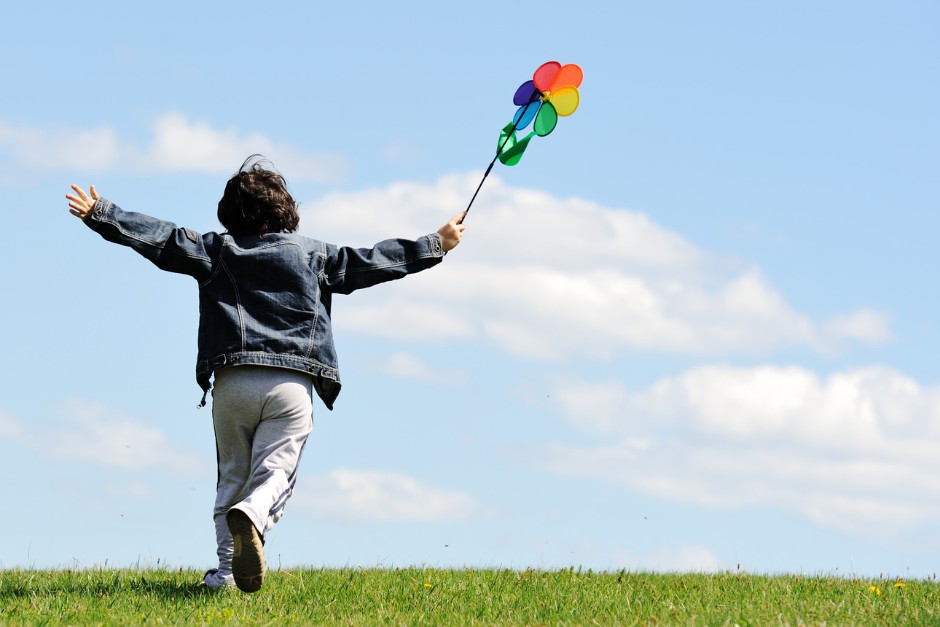 At any age, vision is an incredibly important aspect of our lives, but children today face some unique challenges that previous generations have not really faced in quite the same way. As a result, they need extra care with their vision as they develop, because problems that begin here will continue, and likely worsen, as they progress through life.
At any age, vision is an incredibly important aspect of our lives, but children today face some unique challenges that previous generations have not really faced in quite the same way. As a result, they need extra care with their vision as they develop, because problems that begin here will continue, and likely worsen, as they progress through life.
Children’s Eye Health and Safety Month takes place throughout August and was created to help raise awareness of children’s eye health and the vulnerabilities modern life presents, which are often easy to overlook.
The Challenges of the Digital Age
Children today spend a huge amount of time looking at and using digital devices, more so than any previous generation. From TVs, phones and tablets for entertainment to screens used in education, even doing homework involves screen time today, children spend so much of their time around screens in this digital age.
In fact, a recent study showed that for younger children, they can spend over six hours a day using devices with screens, and for teens, that can spiral to more than nine hours. This is not a good environment for the eyes, but because digital devices have become so normalized in our lives, we don’t always see it as an issue.
 The problem is, we tend to forget that digital eye strain can affect people of all ages, and for the protection of children’s eyesight it is important that we take measures to address this risk. But if we look at the current statistics, those risks are very real. The CDC reports that 6.8% of under eighteens have been diagnosed with vision problems, whether that is damage to the eyes or one some form of children’s eye disease. Around 3% of the under eighteens are children with vision loss, whether clinically blind or vision impaired, and defined as having trouble seeing even if they wear glasses or other vision aids.
The problem is, we tend to forget that digital eye strain can affect people of all ages, and for the protection of children’s eyesight it is important that we take measures to address this risk. But if we look at the current statistics, those risks are very real. The CDC reports that 6.8% of under eighteens have been diagnosed with vision problems, whether that is damage to the eyes or one some form of children’s eye disease. Around 3% of the under eighteens are children with vision loss, whether clinically blind or vision impaired, and defined as having trouble seeing even if they wear glasses or other vision aids.
While too much screen time is not such an obvious risk to children’s eye health as the dangers of playing baseball, basketball, swimming or operating machinery in woodwork or metalwork class, it can cause lifelong visual problems. With those sports and activities, eye protection for children is a must, and yet for screens it is very rarely discussed.
 That is why Children’s Eye Health and Safety Month is so important. Overusing digital devices can cause many issues, including eye fatigue, also known as asthenopia. Symptoms include eye discomfort, dimmed vision and headaches, and because one of the main causes is the bright glare screens can produce, is often known as digital eye strain.
That is why Children’s Eye Health and Safety Month is so important. Overusing digital devices can cause many issues, including eye fatigue, also known as asthenopia. Symptoms include eye discomfort, dimmed vision and headaches, and because one of the main causes is the bright glare screens can produce, is often known as digital eye strain.
Another consequence of too much screen time is dry and irritated eyes. We tend to blink less when looking at a screen, and over time this can lead to dryness and irritation and leave the eye more vulnerable to more serious children’s eye diseases.
Screens get us into bad habits and away from proper eye use, and dryness is not the only consequence. Staring at screens can also affect focus flexibility, with hours focused on close objects making it harder to focus on things further away, and this can lead to further strain and other problems, eventually resulting in nearsightedness. This can also be a consequence of spending too much time indoors, with research showing that natural daylight is good for children’s eye health, and device use encourages children to remain indoors.
Key Measures for Protecting Children’s Vision
With the potential consequences of too much screen time impacting vision health, it makes sense to take action to create a strategy for eye protection for children. There are a number of things we can do both as parents and as a society to help manage the issues around the overuse of digital technology.

One of the key steps in the protection of children’s eyesight is to understand how much screen time each child has during a day and take steps to control it. This can be achieved in a number of ways, but an overall strategy of control is best. Adding parental controls to any phones or tablets that restrict time makes it easier to manage, but you can do more. Make it a rule that there is no TV or streaming on devices while eating, for instance, and avoid using TV or video as background noise.
The environment itself can be a problem too, you should avoid situations where children are viewing bright screens in dark rooms, as this combination can result in children with vision loss. Instead, having them do homework on a laptop in a bright, well-lit room, natural light is even better. Finally, children follow their parent’s lead, so set an example in how much you use screens too. It can be difficult to persuade children there is a danger in using devices too much if they see you using them even more.
 You can create a different environment at home that takes away the focus from screen use by using traditional games for the family to play together. Whether chess, Monopoly or something new, there are hundreds of games that you can try. These kinds of activities can be enjoyed around the kitchen table together, even outside if the weather suits, and are a great relief from digital eye strain by eliminating any screen for an hour or two.
You can create a different environment at home that takes away the focus from screen use by using traditional games for the family to play together. Whether chess, Monopoly or something new, there are hundreds of games that you can try. These kinds of activities can be enjoyed around the kitchen table together, even outside if the weather suits, and are a great relief from digital eye strain by eliminating any screen for an hour or two.
But it is not just about limiting time for the protection of children’s eyes, it is how screens are used at all times. A good option is to have the 20-20-20 rule in place. Here, every 20 minutes, ensure the child looks away from the screen and focuses on something at least 20 feet away for a minimum of 20 seconds. You can have a time that tells them when they need to stop, but as a general rule for all, yourself as well as children, it is a great way to protect their vision health even when you are using screens.
 For children with low vision, electronic video magnifiers or related vision aid products are indispensable assistants for their life and study. Although the screens of vision aids are produced and selected in strict accordance with relevant international standards, as mentioned above, staring at the digital screens for a long time will reduce the number of blinks, which is not good for the eyes. Therefore, people with low vision should also follow the 20-20-20 rule. At the same time, follow the doctor’s advice, supplement eye care products that suit them, and close their eyes to rest properly. Doing so is especially important for low vision people. Try to protect the residual vision as much as possible, which is of positive significance to the child’s life.
For children with low vision, electronic video magnifiers or related vision aid products are indispensable assistants for their life and study. Although the screens of vision aids are produced and selected in strict accordance with relevant international standards, as mentioned above, staring at the digital screens for a long time will reduce the number of blinks, which is not good for the eyes. Therefore, people with low vision should also follow the 20-20-20 rule. At the same time, follow the doctor’s advice, supplement eye care products that suit them, and close their eyes to rest properly. Doing so is especially important for low vision people. Try to protect the residual vision as much as possible, which is of positive significance to the child’s life.
Encouraging outdoor play is also recommended, not just for getting away from screens, but natural light is good for eye health, and there are numerous overall health benefits of outdoor play for your children too. When they are using screens, make sure that children view them at a good distance, around arm’s length at minimum, with the screen at or near eye level. Straining to look upwards at a screen can make the symptoms we have discussed even worse. To make sure your approach is working, having regular eye tests for your children is good for peace of mind, but also means any damage to the eyes will be spotted early.
Children’s Eye Health and Safety Month
August is Children’s Eye Health and Safety Month and is a great time to look at how your children use devices and so on. It reminds us of the potential issues the digital world brings, that we should always set a good example to children and think about how and where they use screens at all times.
One of the best ways of helping is creating a better environment for studying at home, encouraging the use of a laptop or computer in a well-lit room, taking regular breaks and so on, to avoid digital eye strain.

But aside from the things parents can do at home, the national exposure of Children’s Eye Health and Safety Month is a welcome opportunity to look at children’s eye health in a wider context. By acknowledging that children are risking vision health due to the lifestyle that society deems normal, we can begin to change attitudes and make the changes needed for improved eye protection for children. This is not only a call to wider society, but media companies too, with better tools to control viewing times when streaming, raising awareness of the need to monitor screen usage and so on.
We have a duty as parents to do as much as we can, but the protection of children’s eyesight is also a societal issue that requires collective action to deal with fully.
References

